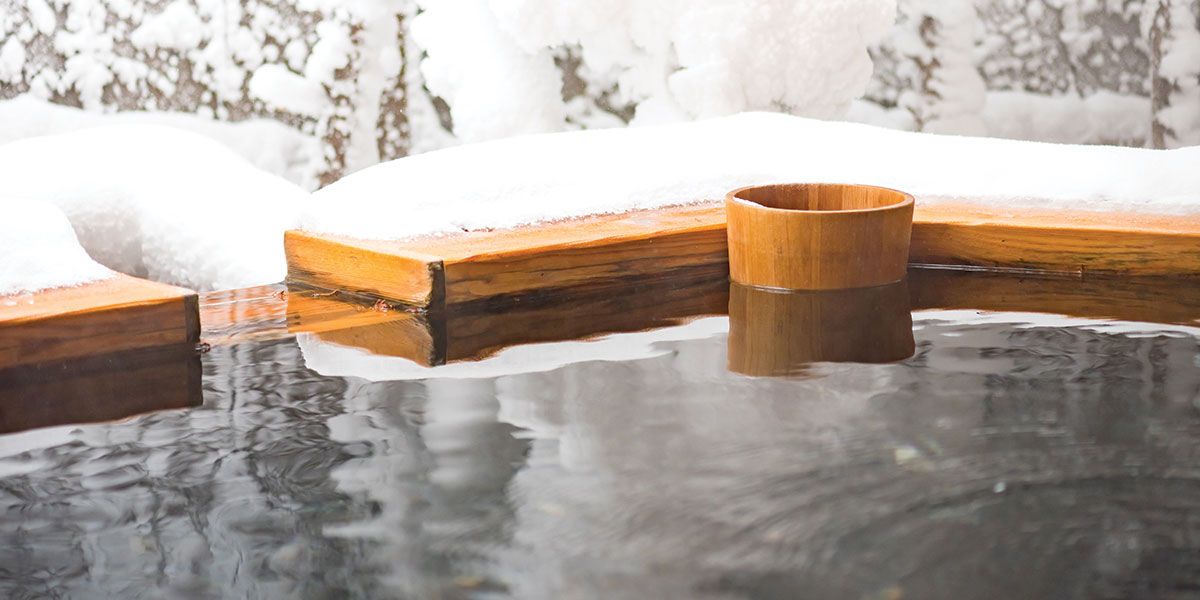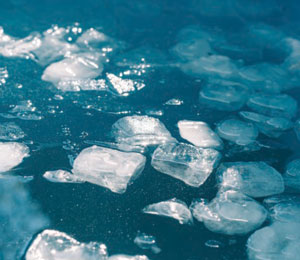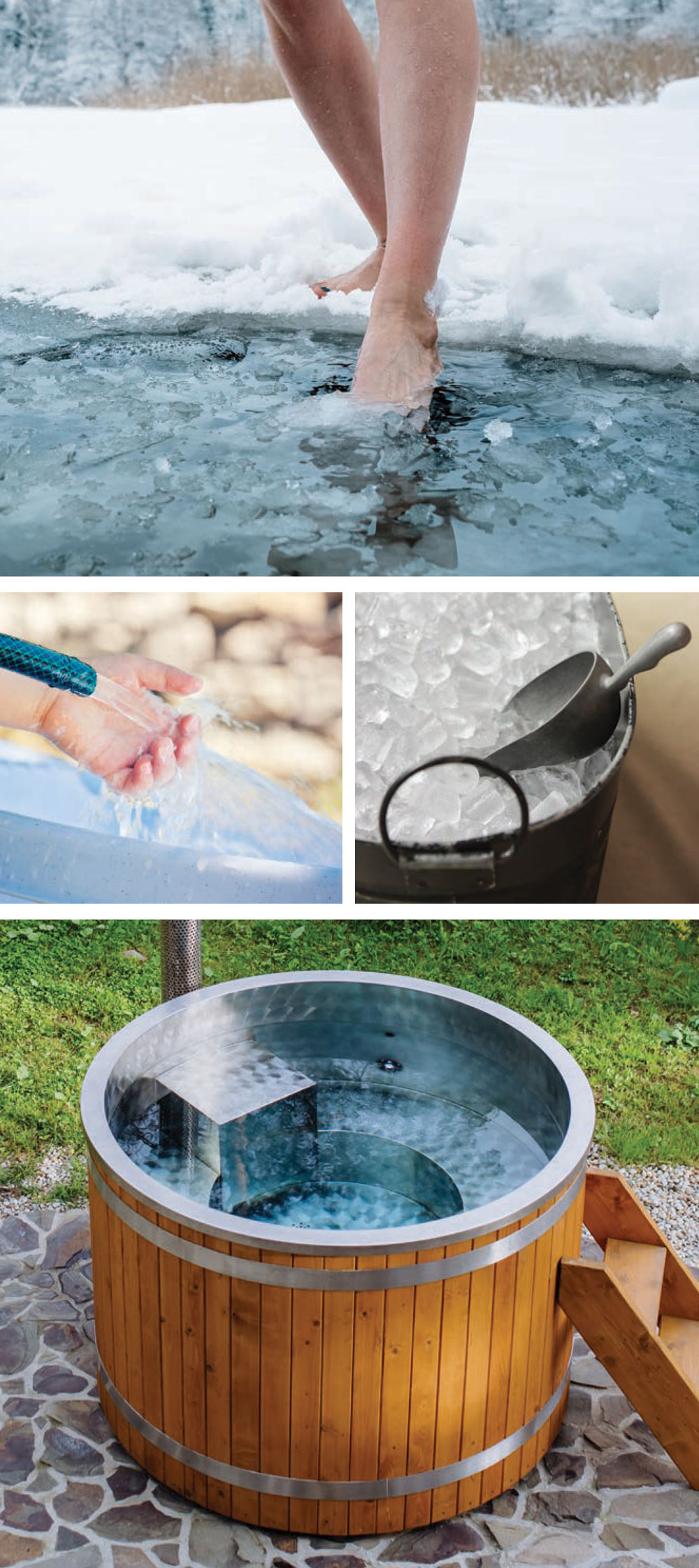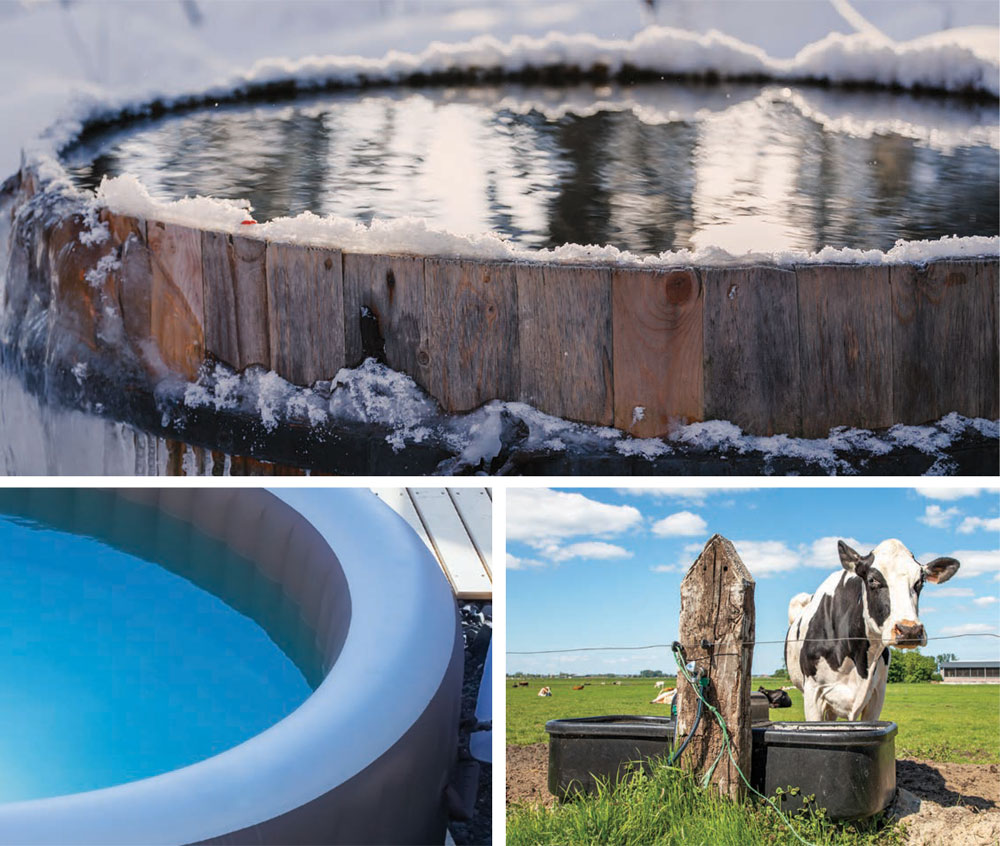POLAR THERAPY

The Revitalizing Benefits of Cold Plunge Pools
One of the hottest trends for 2024 may be icier than you think.
For years, hot tubs were the personification of at-home luxury and relaxation. Now, cold plunge tubs have taken the spotlight and rightly so. An amenity that was previously touted as a form of cold water therapy for recovering athletes, cold plunge tubs have become a welcome addition to the home for those who want to curate a resort-like atmosphere from the comfort of their own abode.
 What is cold plunging?
What is cold plunging?
Cold plunging is a type of therapy that involves immersing oneself in water that is generally 38-60ºF. Most people typically spend between 2 to 10 minutes at a time in the water.
Research suggests that the practice of cold plunging has been around since ancient times, but it has made quite the chilling splash across social media platforms in recent years due to the myriad of health benefits. This form of cold water therapy is said to accelerate the metabolism, offer a huge rush of endorphins, reduce stress, help promote lymphatic drainage, boost injury recovery and heighten your discipline and focus.
As this wellness practice grows in popularity, more at-home options for cold plunge tubs have become available. According to an article on ZillowGroup.com, the presence of at-home cold plunge pools on house listings has surged by a staggering 130 percent compared to the previous year.
Things to keep in mind
Before purchasing a cold plunge tub, you’ll want to do a bit of research and planning.
- Location: When determining where you will put your cold plunge tub, keep in mind that even if it’s relatively lightweight when empty, the tub could weigh up to 700-1,000 pounds once filled. Sturdy decks and patios can be a great spot to set up your icy oasis. Just make sure your deck is strong enough to support the weight of the tub and that you have access to a garden hose to fill it up.
- Sanitation: One way to keep your water clean is to simply drain the tub and then add clean water for the next use. Whether you do this every few days or after each use is up to you. A circulation pump is another option for keeping your cold plunge tub filtered. Circulation pumps are used for aquariums, hot tubs and swimming pools, so finding a good quality one shouldn’t be too difficult or expensive.
- Water cooling: While some of the high-end plunge tubs come with a built-in chiller, most of the budget friendly or DIY tub options do not. Chillers can be quite pricey but they do the job to keep the water at the desired temperature so your plunge tub is always ready to go, without the hassle of having to buy bags of ice every time.
Cold plunge or ice bath temperatures can range anywhere from 38-60ºF, but it’s typically recommended you stick to temperatures around 45-52ºF, especially if you are a beginner. Overall, the temperature will largely depend on the individual and their tolerance for cold.
Types of tubs
There are plenty of cold plunge tubs on the market now that make it easy and affordable to incorporate plunging into your wellness routine. Here are a few at-home options that are easy to setup and simple to use.
- The Polar Recovery Tub can be found on Amazon for under $200. This is a great option if you are just starting out on your cold plunge journey. This tub is lightweight, so it’s easy to change its location if you desire. It’s worth noting that this particular tub doesn’t come with a water chiller, so you will have to purchase one separately or use ice. Also worth mentioning is the compact size of this tub; it’s a tight fit for individuals taller than 6’2”.
- The Ice Barrel 300 can be found on roguefitness.com for around $1,200. This particular tub is a good fit for those seasoned in cold plunging. The Ice Barrel is simple to use, insulated with a tight cover and works well on its own, but also has the option to add a chiller if desired. It holds 77 gallons of water and can comfortably fit a person 6’2” and up to 250 pounds. (The same brand offers another pricier model that can accommodate individuals that are taller than this.) All you’ll need is some outdoor space, access to a garden hose and two big bags of ice.
- If you cannot afford to invest in a cold plunge tub, using a stock tank for your ice bath is a great option. Stock tanks are used to provide water to livestock on farms, but recently many people have been using them as a DIY option for cold plunges. The tanks don’t take much space and fit nicely on most decks and patios if you have one strong enough to hold them. They keep water temperatures cool; they are resistant to rust and easy to clean.
This spring as temperatures are heating up, consider taking the icy plunge of investing in your very own cold plunge tub! ✦
Note: The American Heart Association warns about inherent risks with cold plunge pools, as it shocks the body and can cause hypothermia. Talk to your doctor first, especially if you have any chronic health conditions.
cold plunge pools, cold plunge tubs, cold water therapy, endorphins, ice bath, injury recovery, lymphatic drainage, metabolism, reduce stress








